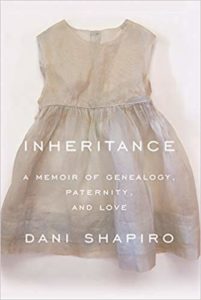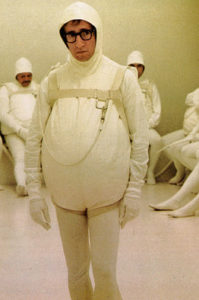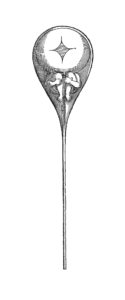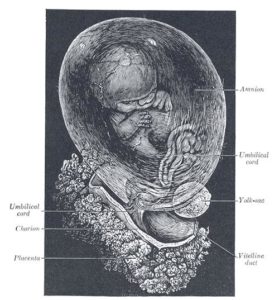A New Memoir about Donor Conception Confronts Genetic Determinism
In her just-released memoir “Inheritance: A Memoir of Genealogy, Paternity, and Love,” Dani Shapiro tells of discovering that she was donor-conceived. The subtext of her compelling story is to confront genetic determinism: the idea that we are our genes.
 Dani found her biological father (BF) just 36 hours after receiving surprising results from consumer DNA testing. My story, still unfolding, is much more typical, as I wrote last week at Genetic Literacy Project.
Dani found her biological father (BF) just 36 hours after receiving surprising results from consumer DNA testing. My story, still unfolding, is much more typical, as I wrote last week at Genetic Literacy Project.
In a few ways Dani’s experience was opposite mine, although our journeys both began with Ancestry.com. Dani’s trajectory, somewhat atypical, was to find first that her half-sister wasn’t her half-sister; that she had a new first cousin who would turn out to provide a crucial clue; and that she was only half Ashkenazi Jewish.
I learned that I have a half-sister; the appearance of a known first cousin added to the accuracy of the half-sis finding; and I am a boring 100% Ashkenazi. I’ve also heard via GEDmatch (a clearinghouse to post DNA downloads from different testing companies) from a European man whose mother matched closely with me and whose ancestors came from the same general area in Ukraine as my maternal grandmother. We said hi and let it go.
Dani and her husband dove right in with help from a friend with genealogy experience. They deftly navigated Facebook to trace that mystery first cousin to an uncle, who would turn out to be Dani’s BF. Photos, the phenotype to back up the genotype, were crucial – yes, you can see people’s photos on Facebook without friending them.

Aside from Dani’s lifelong sense of not belonging, she had been told many times that she doesn’t look Jewish, although she was raised in an Orthodox Jewish home. She recalled odd conversations with her mother years ago: mention of a fertility “institute” in Philadelphia, “slow sperm,” and her father rushing to Philadelphia to, er, participate in making a baby. Dani.
Facebook quickly led Dani to her BF’s website and, eventually, to him. It ended well, as these situations tend to go. But the main unanswered question is likely to remain, because the protagonists are long gone: what did Dani’s parents know about her beginnings? What did my parents know about mine?
Of Paternity and Paternalism
We both did some digging to discover that some doctors, decades ago, mixed sperm from the husband and a donor, who was typically a med student or doctor, although rumors implicate lab techs and even janitors. The couple might know nothing more than that they received a treatment for infertility, back in the days when no one, especially a woman, would question a physician. My post from last week provides data from a seminal article in the New England Journal of Medicine surveying what doctors did and didn’t do to treat infertility circa 1977, and I presume it was worse when my and Dani’s parents were patients.
The doctors meant well – it’s difficult to judge decades later.
 The sperm donor’s privacy was deemed more important than the patient’s right to know, paternalism taken to the extreme. Dani learned that doctors would advise couples to have sex before and after the insemination and to switch obstetricians during pregnancy, to avoid having to lie when indicating the father on the birth certificate. Probably no one envisioned people spitting into tubes and tracking down their sperm donors.
The sperm donor’s privacy was deemed more important than the patient’s right to know, paternalism taken to the extreme. Dani learned that doctors would advise couples to have sex before and after the insemination and to switch obstetricians during pregnancy, to avoid having to lie when indicating the father on the birth certificate. Probably no one envisioned people spitting into tubes and tracking down their sperm donors.
But questions of non-paternity did arise years ago. I learned in grad school what to do in a genetic counseling session when blood test results clearly reveal that “the daddy isn’t the daddy,” aka “non-paternity.” In fact, NPE stood for “non-paternal event” long before the current meaning of “not parent expected.” Facebook has several NPE and DC (donor-conceived) groups.
“The issue of uncertain paternity goes back a long ways,” recalls French Anderson, a physician and a founder of gene therapy. “When I was an intern at Boston’s Children’s Hospital in 1963, a senior hematologist told me about an ethical dilemma. He did a type of genotyping via the blood groups on the red blood cells, primitive by today’s standards, but still he could identify parents and children. Sometimes the father could not have been the father. What should the doctor do? Unless there was a definite medical need to reveal this traumatic situation, he never would reveal it. Nowadays, many people are excited to find that they have ‘new’ relatives. But some are not happy at all to discover this.”
That’s an understatement!

After the reveal of Dani’s dad’s pseudonymous identity on page 61, the rest of Inheritance traces her assembling of the puzzle pieces, with a series of visits: her parents’ rabbi, relatives, older doctors. I was frustrated that she mentions speaking to Leonard Hayflick as if he’s just some old doc, and not the famous father of biological aging and the telomere clock.
The “Hayflick limit” of 50 cell divisions is genetics lore. Her cold-calling him for a pleasant convo is like me calling Bruce Springsteen to chat. But the book isn’t about the science. Still, I think any book about donor conception needs a description of meiosis, so frozen sperm aren’t called “souls.” But, I’m a nerd. The book is a terrific read and has brought comfort to many in those Facebook groups.
It was Dani’s very strong Jewish identity that fueled her eventual decision to regard her social father (SF) as her real dad. I came to that conclusion in my case too, but for a different reason that I didn’t recognize until a stranger emailed me right when I was finishing Dani’s book. Synchronicity is odd, sometimes.
From “When Does Life Begin?” to “What is a Parent?”
A reader of DNA Science, David D., took issue with my conclusion from 2013’s “When Does a Human Life Begin? 17 Timepoints.”
I repost 17 Timepoints when the abortion debate resurfaces, typically in the shadow of proposed restrictions on women’s reproductive rights or, better, when those rights are preserved, as just happened in New York state. “Strong feelings always seem to trump biological facts” I wrote as the impetus for the post. I then list those facts, summarizing human prenatal development in a nutshell that many are unwilling to crack, lumping fertilized ova with balls of cells with infants.
My conclusion: Timepoint #14, corresponding to prenatal week 21, when a fetus has a (very slim) chance of becoming a premature baby if delivered. It’s just my opinion, but based on comparing biological facts plus the direct experience of three pregnancies. How many times have you been pregnant, John Kasich?
 I wrote in 17 Timepoints: “The ability to survive outside the body of another sets a practical, technological limit on defining when a sustainable human life begins. That limit may of course change. Having a functional genome, tissue layers, a notochord, a beating heart … none of these matter if the organism cannot survive where humans survive. Until an artificial uterus becomes a reality, technology defines, for me, when a human life begins.”
I wrote in 17 Timepoints: “The ability to survive outside the body of another sets a practical, technological limit on defining when a sustainable human life begins. That limit may of course change. Having a functional genome, tissue layers, a notochord, a beating heart … none of these matter if the organism cannot survive where humans survive. Until an artificial uterus becomes a reality, technology defines, for me, when a human life begins.”
David D. posed, “But what about someone on life support? Are they no longer human? What about a person in a coma that can no longer perform the practical and rational exercises that are characteristic of human behavior? Have they, in the throes of disease and the decays of nature, forfeited their humanity?”
I answered, politely, that people on life support, in a coma, or sick, had existed in the world outside the womb for a time without medical or technological assistance. They were no longer zygotes nor blastocysts nor fetuses when they awoke in the mornings and had their coffee and went to work and enjoyed life.
I thanked him for the discussion, because his comment helped me to clarify my thoughts about “NPE” status. For if I’m not considering a prenatal human as a person, then how can I consider sperm from a donor as an automatic badge of fatherhood? I can’t.
The donor, after all, likely just pocketed the $25 fee for his services, making it not exactly a donation. He wasn’t there when my parents learned that “the rabbit died,” an old form of pregnancy test. He didn’t accompany my mother to the doctor, spread the happy news, take me to the playground, watch me sing in the choir at temple, schlep me to boring antique stores most weekends when I was a crabby teen, teach me to do the books at his business, be present in my life for nearly half a century.
 Treating a sperm donor, who suddenly learns that an adult child or children exist, as a father is the height of genetic determinism. It wraps a man’s entire essence into a haploid genome stuffed into the head of a sperm cell. We are more than the genes dealt us at conception.
Treating a sperm donor, who suddenly learns that an adult child or children exist, as a father is the height of genetic determinism. It wraps a man’s entire essence into a haploid genome stuffed into the head of a sperm cell. We are more than the genes dealt us at conception.
However, finding one’s sperm donor can be medically helpful. Dani Shapiro writes that her son was thrilled to learn that male pattern baldness was not in his future, although that’s usually passed on the mother’s X. She learned of an adult-onset eye condition that she indeed has early signs of and can begin treatment. And I recently made a major medical decision based on my new half-sibling’s health history.
I’ve done a lot of thinking since discovering my NPE status early in the fall. At least for me, nurture wins out over nature. My father is the man who raised me.
